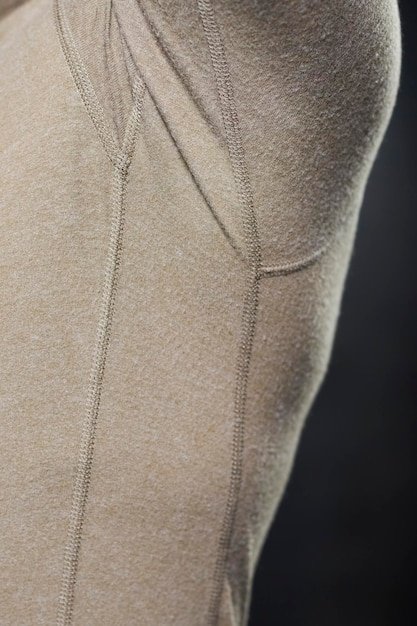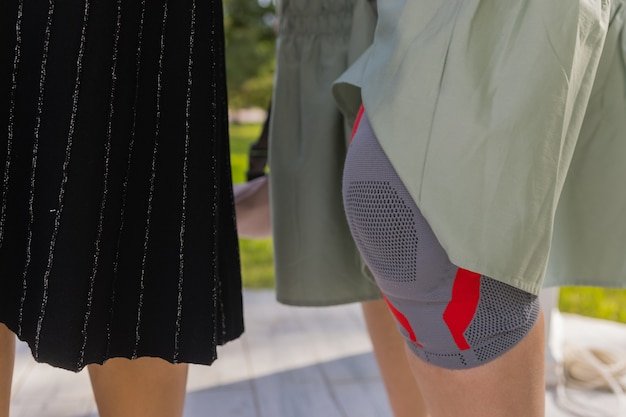The Circular Closet focuses on DIY strategies to extend garment lifespans, promoting sustainability by reducing textile waste through creative repairs, upcycling, and mindful consumption habits within the fast-fashion landscape.
Navigating the fast-fashion world can feel like a constant cycle of consumption and disposal. But what if you could break free from this cycle and create a sustainable wardrobe that lasts? Enter the circular closet, a concept centered around DIY strategies for extending garment lifespans and minimizing waste.
Understanding the Environmental Impact of Fast Fashion
Fast fashion’s rapid production and disposal cycle has a significant environmental impact. Understanding this impact is the first step towards creating a more sustainable and circular approach to fashion.
The Cost of Constant Turnover
The fast fashion industry encourages frequent purchases of inexpensive clothing, leading to massive textile waste as consumers quickly discard items. This waste ends up in landfills, contributing to environmental pollution and resource depletion.
Water and Resource Consumption
Producing fast fashion requires vast amounts of water for cotton cultivation and textile dyeing. Additionally, the industry relies on non-renewable resources like petroleum for synthetic fabrics, further exacerbating environmental issues.

By embracing DIY strategies for extending garment lifespans, we can reduce our reliance on fast fashion. This shifts our perspective from disposable consumption to mindful garment care and creative reuse, ultimately fostering a more sustainable relationship with our clothing.
Essential DIY Skills for Garment Longevity
Developing essential DIY skills can significantly increase the lifespan of your garments. From basic sewing techniques to creative mending, these skills empower you to repair and revitalize your wardrobe.
Mastering Basic Sewing Techniques
Learning basic sewing skills, such as hand-stitching and using a sewing machine, is crucial for garment repair. These skills enable you to fix seams, replace buttons, and mend small tears, preventing minor damages from turning into unwearable issues.
Visible Mending: Embracing Imperfection
Visible mending involves repairing garments in a way that celebrates the repair itself. This can include using colorful patches, embroidery, or decorative stitching to add character to your clothing while extending its lifespan. It’s about embracing the story of your garments and adding a personal touch.
- Learn simple stitch techniques for patching holes.
- Experiment with embroidery to cover stains or imperfections.
- Use contrasting fabrics to create eye-catching visible mends.
Investing time in these skills not only saves money but also fosters a deeper connection with your clothing. Each repair tells a story, transforming your garments into unique and cherished pieces.
Creative Upcycling Projects to Transform Old Clothes
Upcycling is the process of transforming discarded materials into new products of higher value. In the context of fashion, upcycling offers endless creative possibilities to repurpose old clothes into stylish and functional items.
Turning T-Shirts into Tote Bags
Old t-shirts can be easily transformed into reusable tote bags by simply sewing the bottom closed and creating handles from the sleeves. This simple project reduces plastic bag consumption while giving your old t-shirts a new purpose.
Denim Transformations: From Jeans to Jackets
Denim is a durable fabric that can be upcycled into various items. Old jeans can be cut and sewn into denim jackets, vests, or even patchwork skirts. The possibilities are limited only by your imagination.

Embarking on upcycling projects not only extends the lifespan of your clothing but also reduces textile waste and promotes creativity. By seeing potential in discarded items, you contribute to a more sustainable fashion ecosystem.
Extending Garment Lifespan Through Proper Care
Proper care is essential for extending the lifespan of your garments. Simple habits, such as correct washing techniques and storage methods, can significantly impact the longevity of your clothes.
Gentle Washing Techniques
Harsh detergents and aggressive washing cycles can damage fabrics and shorten garment lifespans. Opting for gentle, eco-friendly detergents and washing clothes on delicate cycles minimizes wear and tear.
Proper Storage and Organization
Storing clothes correctly prevents damage and maintains their quality. Folding delicate items, using padded hangers for structured garments, and storing clothes in breathable containers can prolong their lifespan.
- Wash clothes inside out to prevent fading.
- Avoid over-drying clothes, as excessive heat can weaken fabrics.
- Store clothes in a cool, dry place away from direct sunlight.
Implementing these simple yet effective care practices will ensure that your clothing remains in good condition for years to come, reducing the need for frequent replacements and promoting a more sustainable wardrobe.
Building a Sustainable Mindset: Conscious Consumption
Adopting a sustainable mindset is crucial for breaking free from the fast-fashion cycle. This involves conscious consumption habits, such as buying less, choosing quality over quantity, and supporting ethical brands.
The Power of Buying Less
Reducing the number of new clothes you buy is one of the most impactful ways to minimize your environmental footprint. Before making a purchase, consider whether you truly need the item and whether it aligns with your personal style and values.
Investing in Quality and Durability
Choosing high-quality, durable garments over cheap, trendy items ensures that your clothes will last longer and require fewer replacements. Look for well-constructed pieces made from sustainable materials, such as organic cotton or recycled fibers.
- Research brands committed to ethical and sustainable practices.
- Consider buying secondhand or vintage clothing.
- Look for certifications like GOTS (Global Organic Textile Standard).
By embracing conscious consumption habits, you contribute to a shift away from fast fashion and towards a more sustainable and ethical fashion industry. This involves considering the environmental and social impact of your purchases and making informed choices that align with your values.
Organizing a Clothing Swap or Donation Drive
Clothing swaps and donation drives are excellent ways to give your unwanted clothes a new life while promoting sustainability within your community. These initiatives reduce textile waste and provide affordable clothing options for others.
Hosting a Clothing Swap
Organize a clothing swap with friends, family, or community members. Participants bring gently used clothes to exchange, providing an opportunity to refresh their wardrobes without buying anything new. Set guidelines for the condition of items and create a fun, social atmosphere.
Donating to Charitable Organizations
Donate unwanted clothes to reputable charitable organizations that redistribute them to people in need. Ensure that the clothes are clean and in good condition. Research local charities and their specific needs to ensure your donation is effective.
Participating in clothing swaps and donation drives extends the lifespan of garments and supports your community. These initiatives promote a circular approach to fashion by redirecting unwanted clothes to those who can use them, reducing textile waste, fostering a sense of community, and promoting sustainable practices.
| Key Point | Brief Description |
|---|---|
| 🧵 DIY Skills | Learn sewing & mending to repair clothes. |
| ♻️ Upcycling | Transform old items into new, useful products. |
| 🧺 Proper Care | Wash gently and store correctly to extend life. |
| 🛍️ Conscious Buying | Buy less, choose quality for sustainability. |
Frequently Asked Questions
▼
▼
▼
▼
▼
Conclusion
Embracing the circular closet is a powerful step towards a more sustainable lifestyle. By adopting DIY strategies, practicing mindful consumption, and engaging in community initiatives, we can reduce our environmental impact and create a wardrobe that lasts.